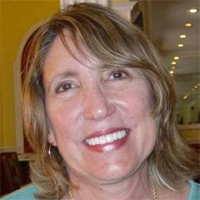According to the National Institute of Mental Health, between 8.7% and 18.1% of Americans suffer from a phobia. It is thought that about 10.2% of older adults suffer from phobias, lower than the average. This may be because older people tend to under-report their feelings of anxiety. However, if we assume that the statistics are close to accurate, it appears that as people age their likelihood of phobias goes down. It is not yet clear why this happens.
A specific phobia is an intense, irrational fear of a specified object or situation. Specific phobias can be classified in four major types: animals, medical, natural environment, and situational. Many people have more than one phobia in the same category, such as dogs and snakes. However, it is also possible to have phobias in more than one category, such as dogs and needles.
Regardless of the feared object, those suffering from specific phobias will show similar symptoms, and they will almost always include:
•Terror: A persistent and overwhelming fear of the object or situation.
•Physical Symptoms: Dizziness, shaking, palpitations.
•Obsessive Thoughts: Difficulty thinking about anything other than the fear.
•Desire to Flee: An intense instinct to leave the situation.
•Anticipatory Anxiety: Persistent worrying about upcoming events that involve the phobic object or situation.
Studies also show that of the phobias, only agoraphobia is statistically likely to develop for the first time in older adults. Agoraphobia is often misunderstood as a phobia of leaving home. Actually, it is a phobia of being trapped in a situation where escape or help is not easily available in the event of a panic attack. Agoraphobia is often a progressive phobia, and may eventually lead to a fear of leaving the house. However, it is the panic attack, rather than the act of being in public, that is the cause of the fear. Agoraphobia can cause avoidance of public transportation, shopping, driving, and leaving home –resulting in a very negative impact on quality of life. As we age, other phobias appear to be present almost exclusively in people who have already had them.
We also have to keep in mind that many older adults develop fears that may be life-limiting but are not irrational or inappropriate. For example, an older person who has had several falls may develop a fear of being alone in public. If the fear is of falling and being unable to reach help, then it is not necessarily a phobia.
Treating phobias in older adults can be somewhat more difficult than treating them in younger people. Many popular medication options, such as SSRIs (a category of antidepressants often successful in treating phobias), must be used with more caution in elderly persons, particularly those with certain physical conditions and who are taking other medications.
Seeing a mental health professional can be effective, if the person is both willing and able to receive the assistance. Financial concerns may make it difficult for some older people to seek mental health therapy. They may also feel that a stigma is attached to seeking this type of treatment. Unfortunately, years ago seeking psychological assistance erroneously meant that the person must be “crazy” and some old timers still believe that to be true; therefore, they are reluctant to seek help even if they know they need it.
If we know of an older person who needs help with a phobia, we may want to help, but in our quest to assist them we need to avoid being overbearing, treating them like children, or making them feel that they can no longer trust their own judgment. It is important to be supportive without giving directives. Suggesting seeing a medical professional is recommended, but in a way that is not a put off, perhaps suggesting that it would make them feel better. If there is no physical cause for the symptoms, then seeing a therapist may be indicated. Looking for a professional that specializes in geriatric psychiatry would be best. He or she would be familiar with the unique needs and concerns of older adults and will be better able to prescribe appropriate medication.
I had an aunt with phobias that became worse as she aged, including agoraphobia. Unfortunately, despite my efforts she would never seek help or accept that she had problems. She became more and more reclusive, and when she died at age 92, she was practically a shut in who kept all of her curtains and blinds closed. Watching her quality of life diminish made me very sad. I had to realize that I couldn’t force her to want to change or to seek help.
We all can make efforts by exposing our loved ones to relevant literature about the phobia, informing their primary care physician about their issues, and encouraging them to get help in ways that are not “turn offs.” We can only hope that our efforts are translated into positive actions by others.

Printer Friendly Version

